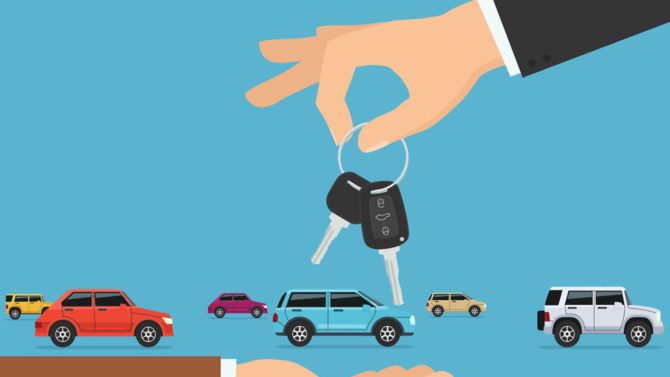Buying a car in France

Everything you need to know about buying a car in France, from where to buy it to the paperwork you’ll need

France is a large country and for anyone living anywhere other than in the centre of a big city, a car is almost certainly essential. Whether you are moving to France and need to buy a first French car or simply need to replace an older vehicle, there comes a time when almost every resident will need to think about buying a car in France.
The starting point is always to decide whether you are going to buy new or secondhand – ‘une voiture d’occasion’. Traditionally, budget played a major part in this decision but with constantly changing technology and fuel pricing, initial purchase cost is perhaps slightly less of a key factor than it once was.
Obviously there will be buyers who can’t afford a new vehicle and have a very limited budget. Equally, there will be those with few financial constraints who can select their model and specifications entirely according to personal preference. However, the vast majority of buyers lie somewhere in between and this is where decision making can prove a little more tricky.
BUYING NEW

Buying brand new cars used to be seen as a way to lose large amounts of money fast, due to the depreciation involved, and this is why canny buyers often opted for nearly new, low mileage models direct from the dealers or concessionaires. However, emissions taxes, green initiatives and the constantly developing electric vehicle market mean that it is increasingly difficult to predict future resale values.
What was a ‘good bet’ even five years ago is no longer the case and buying a two or three-year-old vehicle outright can often prove to be an expensive gamble unless you really know what you are doing.
Buyers used to UK prices will also be shocked by the cost of secondhand French cars. Even those with ridiculously high mileage and a lot of wear and tear still command a hefty price tag in comparison to the UK market. If you are mechanically minded and confident in your abilities to spot a bargain, it can be worth looking at the bottom end of the market but again, for the vast majority of buyers who know relatively little about the various models and their potential pitfalls, buying a secondhand vehicle can be a recipe for disaster!
FINANCE DEALS
So what are the options? You can bite the bullet and go for peace of mind with a brand new vehicle, in which case you can either pay for the vehicle outright (which means that you have tied up a considerable sum of money in an asset) or buy it on credit. Almost all banks offer personal loans for vehicle purchases; however, all the main dealerships also offer finance packages which are often extremely competitive and can be simpler to arrange.
The other two financing options are LLD ‘location longue durée) and LOA (la location avec option d’achat). These can be respectively translated as ‘long term rental’ and ‘rental with the option to buy’, although confusingly both are generally referred to as ‘le leasing’!
The big advantage of these two systems is that you get to drive a brand-new vehicle, with servicing and breakdown cover included for a fixed monthly fee. Costs will depend on the duration of the agreement, the annual mileage you expect to do, and the make and model.
You can choose to pay a deposit (avec apport) or not (sans apport) and decide on the rental period (usually between two and five years) and if you opt for LOA, at the end of the rental period, you can either agree to purchase the vehicle outright at a pre-agreed price, or simply hand it back.
While returning a car at the end of the rental period is a concept that is still foreign to many car owners, rapidly changing technology means that the car you buy today may not be the car that you want in five or even three years, so renting is a safer option in terms of ensuring that any future vehicle will still be appropriate for your needs.
All the main manufacturers have a range of offers at any given time and while le leasing used to be reserved solely for brand new vehicles, many are starting to offer leasing options on pre-owned vehicles too.
Once you know roughly the size and type of vehicle you require, contact all the main dealerships in your area to see what they have on offer. A quick search online will reveal current promotions and offers. However, unless you are absolutely set on a particular make or model, it is well worth spending some time visiting each dealership and seeing what you can negotiate. Don’t be afraid to haggle as they have a surprising amount of leeway and you may be able to save up to €100 per month by shopping around and negotiating prices.
BUYING SECONDHAND
If leasing or buying new is not for you, then a main dealership is still a good place to look for a secondhand vehicle. You will pay slightly more than buying privately but unless you have a local ‘garagiste’ you can trust, then the peace of mind that comes with buying from a dealer may be worth the extra.
Again, you can often negotiate a few extras such as servicing or changing the car registration into your name as part of the overall price. Websites such as leboncoin.fr and paruvendu.fr will give you an idea of what is available in your area and at what price but the publication L’Argus (available in print and online) is generally considered to be the definitive guide to vehicle prices in France.
PAPERWORK
Once you have found your vehicle and agreed a price, you will need to ensure that all the paperwork is in order. The seller must provide a ‘certificat de cession’ (certificate of transfer and document of sale). This must be completed in triplicate and signed by the person whose name is on the ‘certificat d’immatriculation’ (also known as the ‘carte grise’). The ‘certificat d’immatriculation’ must be crossed through diagonally and the person whose name is on it must write along the line, ‘Vendu le…’ (Sold on the…) followed by the date and, preferably, the time, and then sign it.
You should also be given ‘un certificat de situation administrative’ – often referred to as ‘un certificat de non-gage’ as this certifies that the car is not being held as security against a loan and that there is no legal opposition to its sale. Any car which is over four years old must also be sold with ‘un contrôle technique’ (MOT equivalent) which is not more than six months old, or two if a retest is required.
As a buyer you are required to complete your portion of the ‘certificat de cession’ and register the vehicle within one month of the date of sale. This process now needs to be done online via the government website known as ANTS (Agence Nationale des Titres Sécurisés) and to complete the process you will need the documentation mentioned above, plus valid ID, your driving licence, a utilities bill or similar that is less than six months old, proof of insurance cover and the completed form requesting change of ownership – ‘la demande de certificat d’immatriculation’ (cerfa 13750), which can be downloaded here immatriculation.ants.gouv.fr/Services-associes/Telecharger-un-formulaire-Cerfa.
Once you have done that you can put your feet up and look forward to driving your new French car. Happy motoring!
DON’T MISS
Share to: Facebook Twitter LinkedIn Email


